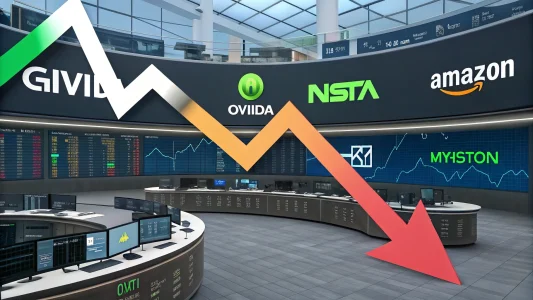For years, rising healthcare costs have posed the greatest threat to a comfortable retirement. As opposed to general inflation, medical inflation consistently outpaces cost-of-living adjustments, draining even well-funded nest eggs quickly.
In 2026, retirees will face a convergence of escalating costs, especially within the Medicare system, that will present a critical inflection point. As Medicare premiums, deductibles, and out-of-pocket caps are projected to rise significantly this year, proactive financial planning is not only advisable but essential.
We encourage our readers to understand these changes and to implement smart strategies now in order to safeguard their retirement income for years to come. To master your healthcare budget in 2026 and beyond, this guide breaks down the major cost drivers and provides a four-part action plan.
Table of Contents
ToggleThe 2026 Cost Crisis: Where the Money is Going
From expensive specialty drugs to labor shortages, several factors are driving the rising tide of healthcare costs. For retirees, though, Medicare and overall medical inflation will be the primary areas of financial concern.
Medicare: The Projected 2026 Price Shock
As indicated by the Medicare Trustees Report and its associated projections, recent cost increases have been among the largest in history.
Part B Premium & Deductible Spike
- Part B premiums. In 2026, Medicare Part B (which covers doctor visits and outpatient care) premiums are expected to increase significantly from around $185 in 2025 to $206.50. In recent memory, this is one of the largest increases in Medicare Part B premiums.
- Part B deductibles. Additionally, the Part B deductible is expected to rise from approximately $257 to approximately $288 per year.
Part D (Prescription Drug) Cost Evolution
Despite the Inflation Reduction Act (IRA), which caps the annual out-of-pocket maximum for Part D enrollees at $2,100 for 2026 (a major benefit), other costs are still rising;
- Base premium increase. There will be an increase of about 6% in the base beneficiary premium for Part D.
- Deductible increases. Additionally, the Part D deductible is expected to increase from $590 to $615.
IRMAA: The Hidden Tax on Higher Earners
For beneficiaries with high modified adjusted gross incomes (MAGI), the Income-Related Monthly Adjustment Amount (IRMAA) is applied to Part B and Part D premiums. The IRMAA thresholds for 2026 have been adjusted, and the surcharges themselves are increasing.
High-earning retirees whose MAGI exceeds the threshold (approximately $109,000 for individuals and $218,000 for married couples) will pay hundreds more per month, meaning they may face an annual increase of over $2,500.
Medical Inflation Beyond Medicare
Apart from known Medicare increases, overall medical inflation continues to be a major issue. In 2026, researchers predict employer-sponsored health insurance costs (a benchmark for medical price trends) to increase by 9.5%, thanks to;
- High-cost medications. Specialty drugs, like GLP-1s (for diabetes and weight loss), are a major cost driver.
- Labor shortages. As nurses, doctors, and other healthcare workers’ wages continue to rise, provider costs rise as well.
- Increased utilization. As a result of pandemic-era deferrals, people are utilizing medical services more frequently, which hurts insurance provider costs.
The 4-Pillar Retirement Healthcare Action Plan
As these cost increases loom on the horizon, the time for “wait and see” has passed. To maximize their coverage, minimize surcharges, and strategically fund future long-term care needs, retirees need a multifaceted approach to healthcare planning.
Pillar 1: Execute a Strategic Medicare Open Enrollment Review
You have the best chance of saving money for 2026 during Open Enrollment (October 15 – December 7). Without a review, a simple renewal is a surefire way to overpay.
| Strategy | Action Point | Expected Savings Impact |
| Compare Medigap vs. Advantage | You should reevaluate whether your current Medigap policy (which covers the gaps in Original Medicare) still makes sense versus a potentially lower-premium Medicare Advantage plan (Part C). In addition to offering more benefits (vision and dental), advantage plans often require network adherence (HMO/PPO). | There is a possibility you could save thousands of dollars in premiums and deductibles, depending on your health status and utilization. |
| Part D Drug Check | By using the Medicare Plan Finder tool, you can enter your current prescription list. Every year, Part D formularies and costs change. The cost of a single drug can wipe out any savings you’ve made, even if your premiums drop. | A typical Part D shopper saves more than $1,100 per year by shopping their plan annually. |
| Maximize Low-Income Assistance | Determine if you qualify for Medicare Savings Programs (MSPs) and Extra Help (for Medicare Part D). For those with limited incomes and resources, these programs help cover premiums, deductibles, and co-pays. | The program eliminates premiums and caps drug costs at very low amounts. |
Pillar 2: Implement IRMAA-Reduction Strategies
The IRMAA surcharge for 2026 will be based on your Modified Adjusted Gross Income (MAGI), so managing your tax obligations now has the potential to impact future costs.
- Qualified Charitable Distributions (QCDs). You can transfer funds directly from a Traditional IRA to a qualified charity if you’re 70.5 or older. To reduce your exposure to IRMAA, these distributions do not count as MAGI, which counts toward Required Minimum Distributions (RMDs).
- Roth conversions. You should strategically convert Roth accounts during low-taxable years (e.g., before RMDs begin). Even though a conversion temporarily increases your MAGI, future growth and withdrawals will be tax-free, dramatically reducing IRMAA surcharges in later years.
- Tax-efficient withdrawal order. To keep your annual MAGI below the IRMAA threshold, prioritize withdrawals from tax-free Roth accounts over traditional IRAs/401(k)s.
Pillar 3: The Long-Term Care Imperative
The majority of long-term care (LTC) expenses are not covered by Medicare, including extended stays in assisted living facilities and long-term home health care aides. Due to labor costs, the average cost of a private nursing home room is already over $100,000 per year. In retirement planning, this can be the biggest unbudgeted risk.
| Funding Solution | Benefit to Retirees |
| Health Savings Account (HSA) | Triple-tax advantage’s powerhouse. It offers tax-deductible contributions, tax-free growth, and tax-free withdrawals for qualified medical expenses (including many long-term care services). At 65, it functions like an IRA but with tax-free medical withdrawals. Don’t forget to maximize your contributions while you’re working. |
| Hybrid Life/LTC Policy | Combines life insurance and long-term care insurance. It pays for care if you need it. In the event you don’t, your beneficiaries receive the death benefit. As a result, there is no “use it or lose it” risk associated with traditional long-term care insurance.. |
| Home Equity Access | To self-fund future care needs, explore Reverse Mortgages or Home Equity Lines of Credit (HELOCs). For this strategy to be successful, it must be carefully planned with a financial advisor. |
Pillar 4: Prioritize Prevention and Wellness
The cheapest healthcare is the one you don’t need. In other words, wellness is a powerful financial defense.
- Maximize free screenings. Benefit from free annual wellness visits and preventative screenings covered 100% by Medicare. By detecting conditions like high blood pressure or diabetes in their early stages, catastrophic costs can be avoided in the future.
- Focus on lifestyle. Diet, exercise, and social engagement aren’t just good for your health; they’re also beneficial for your finances. By maintaining a healthy weight and staying active, chronic conditions that drive high medical costs can be reduced significantly.
- Generic focus. If possible, switch to generic medications with your doctor. As Part D deductibles rise, switching brand-name prescriptions to generics saves you money.
Final Word of Advice: Own Your Health Plan
Your retirement plans are not doomed by the rising costs of 2026. Today, the biggest financial mistake retirees can make is operating on autopilot, hoping last year’s Medicare plan will still work, or ignoring the looming threat of long-term care.
When you retire, you become the CEO of your financial life. Be proactive, strategic, and disciplined in order to deal with the projected cost increases of 2026. Make a concrete plan today to cover the high-cost risk of long-term care by reviewing your Medicare options annually. When you own your health plan, you ensure that retirement is financially secure, rather than sabotaged by healthcare.
Image Credit: Towfiqu barbhuiya; Pexels

















